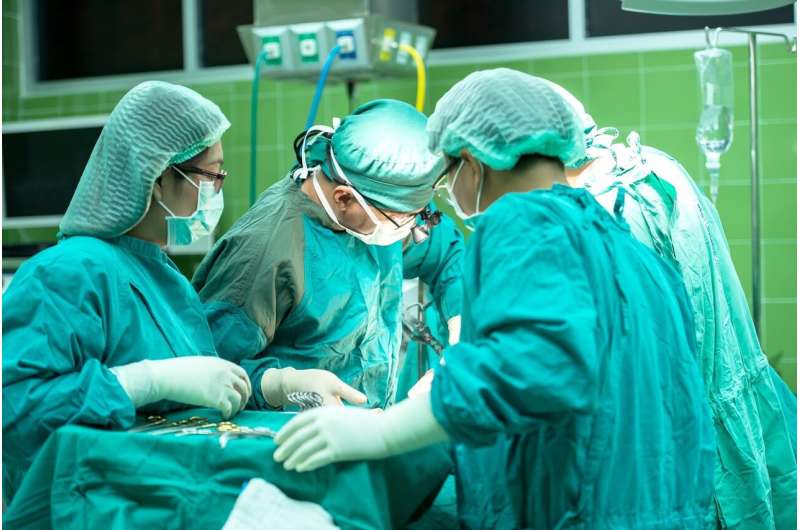Credit: Pixabay/CC0 Public Domain
A study in the Journal of Thoracic Oncology (JTO) comparing surgeries performed at one Chinese hospital in 2019 with a similar date range during the COVID-19 pandemic found that routine thoracic surgery and invasive examinations were performed safely. The JTO is the official journal of the International Association for the Study of Lung Cancer.
Wentao Fang, MD, chief director of the Department of Thoracic Surgery, Shanghai Chest Hospital, Shanghai Jiao Tong University, Shanghai, China and his colleagues analyzed the number of elective procedures by a single surgeon team between 2019 and 2020 and compared the clinicopathological characteristics, surgical procedures and perioperative results of this year with the corresponding period last year.
After the first case of COVID-19 was reported in Wuhan, China in December 2019, the confirmed local cases in Shanghai reached its peak level between late January and early February 2020 and then rapidly decreased by late February after stringent mitigation policies were taken by the Shanghai municipal government.
To prevent potential COVID-19 infection among patients and hospital staff, multiple measures were undertaken and adjusted according to policies and procedures put in place during the pandemic in Shanghai.
In terms of surgical volume, the number of cases declined 14.1%, from 263 in 2019, to 226 in 2020, representing a significant impact of COVID-19 on shifited medical care from cancer patients.
"Importantly, neither medical staffs nor patients were diagnosed of COVID-19 infection during this time," Fang said.
All 226 patients received spirometry examinations and 7 patients received esophagoscopy and 16 patients received bronchoscopy before operations. All the surgical procedures were safely performed under the general anesthesia with double-lumen tube intubations.
More than a quarter (27.7%, n=65) of the patients were current or former smokers. There were 26 patients (11.5%) who received surgical operations after neoadjuvant therapy in 2020, which was similar to those in 2019 (34 patients, 12.9%).
Fang reported that the number of surgical procedures began to bounce back from its lowest point in February 2020 as the local situation of COVID-19 showed signs of improvement, and then surpassed the sum of the same period last year in April 2020 when full work resumption was upcoming.
"We noticed that postoperative complication rate decreased in the first two months of 2020 during the peak of the COVID-19 pandemic, when surgical indication was strictly reconsidered, and surgical volume was largely decreased. And complication rates in each month of 2020 was all lower than the same month of last year," Fang said.
"The COVID-19 pandemic had a significant impact on the elective operations for thoracic diseases for a delay of almost two months. However, routine thoracic surgery as well as invasive examinations could be performed safely if careful screening and examinations of patients and effective protection of medical staffs are well completed during the full work resumption in low-risk areas of COVID-19," Fang said.
More information: Yiyang Wang et al. The feasibility and safety of routine thoracic surgeries in the low risk areas during the COVID-19 pandemic. JTO Clinical and Health Reports. January 19, 2021 DOI:doi.org/10.1016/j.jtocrr.2021.100144
Journal information: Journal of Thoracic Oncology
Provided by International Association for the Study of Lung Cancer
























